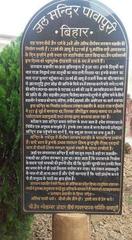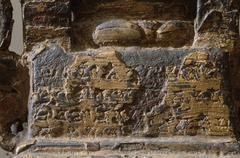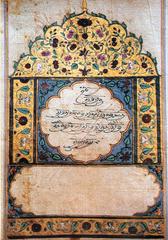Munger Ganga Bridge Visiting Hours, Tickets, and Travel Guide – Bihar, India
Date: 04/07/2025
Introduction
Spanning the majestic Ganges River for approximately 3.7 kilometers, the Munger Ganga Bridge—formally known as Shri Krishna Setu—stands as a testament to modern engineering and regional progress in Bihar, India. This dual-purpose rail-cum-road bridge links Munger and Khagaria districts, significantly improving connectivity between North and South Bihar. The bridge is not just an infrastructural feat; it represents decades of political advocacy, socio-economic aspirations, and a drive for integration in a region rich with history and cultural heritage. With its panoramic vistas and proximity to notable attractions, the bridge is both a vital transportation link and a destination for travelers, history enthusiasts, and photographers alike (Shrine Yatra’s guide to Munger; SwarajyaMag’s feature on the bridge).
Contents
- Historical Background
- Construction Timeline & Engineering Details
- Structural Specifications
- Operational Status and Usage
- Visitor Information: Hours, Tickets, and Accessibility
- Nearby Attractions & Cultural Sites
- Travel Tips
- Frequently Asked Questions (FAQ)
- Conclusion
- Sources and Further Reading
Historical Background
Prior to the construction of Shri Krishna Setu, connectivity across the Ganges in this region was limited to ferries and distant bridges, impeding trade and daily travel. The demand for a bridge here dates back to the mid-20th century, with persistent advocacy from local leaders and the public. The project finally commenced in 2002, reflecting both the necessity and the ambition to connect North and South Bihar more efficiently.
Construction Timeline & Engineering Details
- Foundation Laid: 2002
- Superstructure Completion: 2015
- Railway Section Operational: March 2016
- Road Deck Opened: February 2022 (following the completion of the 14.5 km approach roads)
- Executing Agency: Indian Railway Construction Company Ltd. (IRCON)
Engineering Highlights:
- Welded steel truss design with 12 main spans of 125 meters each
- Over 24,000 tons of steel fabricated on-site (Slideshare)
- Advanced RESTON®POT bearings and TENSA® expansion joints for flexibility and durability (Structurae)
- Supported by 39 piers anchored deep into the riverbed, ensuring resilience to floods and erosion
Structural Specifications
- Type: Double-deck rail-cum-road bridge
- Length: 3.75 kilometers (main bridge), plus 14.5 km of approach roads
- Width: Accommodates a single railway track and a two-lane roadway (separated by a safety partition)
- Location: 60 km downstream of Rajendra Setu and 63 km upstream of Vikramshila Setu
- Significance: Third rail-cum-road bridge over the Ganges in Bihar, after Rajendra Setu and Digha–Sonpur Bridge (Wikipedia)
Operational Status and Usage
- Railway: Fully operational since 2016, facilitating passenger and freight movement between Munger and northern districts.
- Roadway: Opened to vehicular traffic in 2022 after the completion of approach roads, providing seamless road connectivity to National Highways 33 and 31.
- Pedestrian Access: Limited and generally discouraged outside daylight hours for safety reasons.
Visitor Information
Visiting Hours
- Bridge Access: Open 24/7 for vehicles; recommended for visitors between 6:00 AM and 6:00 PM for safety and optimal viewing.
- Pedestrian Access: Restricted, best during daylight hours.
Tickets and Entry
- Entry Fee: None for road users; standard train tickets required for railway travel.
- Guided Tours: No official tours, but local tourism operators occasionally include the bridge in their itineraries.
Accessibility
- By Rail: Munger Railway Station and Jamalpur Junction connect to major urban centers.
- By Road: Approaches from NH 33 (south) and NH 31 (north) via NH 333B.
- By Air: Patna (180 km) and Deoghar (150 km) are the nearest airports.
- Parking: Available near bridge approaches.
- For Differently-Abled Visitors: Approach roads are paved, but assistance may be required due to basic pedestrian infrastructure.
Nearby Attractions & Cultural Sites
- Munger Fort: Historic fort complex with Mughal-era monuments and panoramic river views.
- Bihar School of Yoga: Renowned center for yoga and meditation (Bihar School of Yoga).
- Sita Kund: Hot spring with mythical significance.
- Chandika Asthan Temple: Revered religious destination.
- Jamalpur Locomotive Workshop: One of India’s oldest railway workshops.
- Bhimbandh Wildlife Sanctuary: Rich biodiversity, best visited November–March.
- Kali Pahadi: Hill temple with scenic vistas.
- Begusarai & Khagaria: Access to Kanwar Lake, Simaria Ghat, and rural landscapes.
For a comprehensive list, see Shrine Yatra’s guide to Munger.
Travel Tips
- Best Time to Visit: October to March for cooler weather and clear river views.
- Photography: Early mornings and late afternoons offer the best lighting.
- Local Experiences: Try traditional Bihari street food; participate in festivals like Chhath Puja for a cultural immersion.
- Transport: Local taxis, auto-rickshaws, and buses are easily available.
- Safety: Avoid stopping on the roadway; use caution if walking on the bridge.
Frequently Asked Questions (FAQ)
Q: Is there an entry fee to visit or cross the Munger Ganga Bridge?
A: No, the bridge is free for vehicles and pedestrians. Standard train tickets apply for rail travel.
Q: What are the recommended visiting hours?
A: 6:00 AM to 6:00 PM for optimal safety and views.
Q: Is the bridge accessible for differently-abled visitors?
A: Paved approach roads are present, but assistance may be needed due to limited pedestrian facilities.
Q: Are guided tours available?
A: No official bridge tours, but local operators may offer sightseeing packages including the bridge.
Q: What attractions can I explore nearby?
A: Munger Fort, Chandika Asthan Temple, Sita Kund, Bihar School of Yoga, Jamalpur Locomotive Workshop, and Bhimbandh Wildlife Sanctuary.
Conclusion
The Munger Ganga Bridge (Shri Krishna Setu) stands as a beacon of connectivity and transformation in Bihar. It is a vital infrastructure asset that unites communities, bolsters regional economies, and celebrates the state’s engineering prowess. Visitors to the bridge can soak in panoramic views, discover nearby historical treasures, and witness the dynamic interplay of tradition and modernity. For the most rewarding experience, plan your visit during the cooler months, utilize local transport, and respect the cultural significance of the area.
For real-time updates, curated travel guides, and more, download the Audiala app and explore Bihar’s vibrant heritage. Stay connected with us on social media for the latest news and travel inspiration.
Sources and Further Reading
- Shrine Yatra’s guide to Munger
- Wikipedia: Munger Ganga Bridge
- Munger City: Local Information
- Slideshare: Munger Ganga Bridge Construction
- Structurae: Munger Ganga Bridge
- SwarajyaMag: Connectivity Boost
- The Wire: Road Section Updates
- Bihar School of Yoga
- Bihar Tourism Official Website


